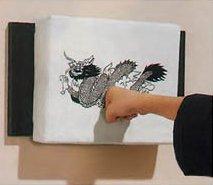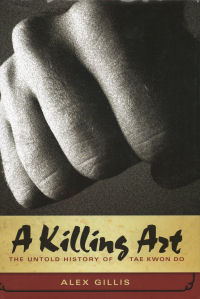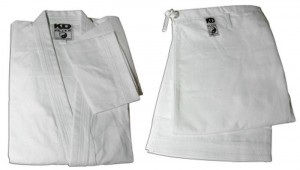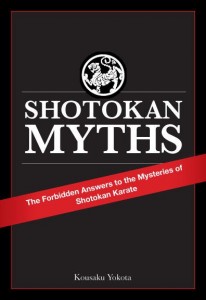 Following on from my interview with Lori O’Connell, back in January, I’ve also had the privilege to review her new book, When The Fight Goes To The Ground (Jiu Jitsu Strategies And Tactics For Self-Defense).
Following on from my interview with Lori O’Connell, back in January, I’ve also had the privilege to review her new book, When The Fight Goes To The Ground (Jiu Jitsu Strategies And Tactics For Self-Defense).
With many sport grappling systems encompassing ground fighting, this book focuses purely on ground fighting from a self-defense point of view. However, with the rising popularity of Mixed Martial Arts/Cage Fighting, Lori’s wisely points out that the threat on the streets has changed. This is not only because many people have trained in MMA, but even those who simply watch it (without training) have become aware of MMA tactics. So for a complete self defense system in today’s world, we also need to be aware of and take into account MMA tactics should we end up in real self defense position on the ground. Along with her own Can Ryu Jiu Jitsu, Lori has cross trained in my many other martial arts including MMA/Brazilian Jiu Jitsu.
Unlike some sport systems that are happy to fight on the ground (Brazilian Jiu Jitsu, Judo, MMA, etc); Lori’s stresses that although we should be aware of ground fighting and prepare for it; the ground is not where we want to be. Apart from broken glass and other obstacles, if there are multiple assailants you really can’t defend yourself properly from the ground (all sports are guaranteed one on one, street fights don’t). Throughout her book she continually refers to getting out of a situation and getting back on to the feet as quickly as possible.
 Most instructional martial arts books take a “one size fits all” approach to the applications they teach. However, Lori looks at different body types, their relative advantages and disadvantages and in many cases gives variations of the techniques for those different body types. Also (unlike most other martial arts books) she takes into account pain resistant attackers due to the effects of drugs/alcohol and advises where some techniques might not be fully appropriate and might need to be adapted to take this into consideration.
Most instructional martial arts books take a “one size fits all” approach to the applications they teach. However, Lori looks at different body types, their relative advantages and disadvantages and in many cases gives variations of the techniques for those different body types. Also (unlike most other martial arts books) she takes into account pain resistant attackers due to the effects of drugs/alcohol and advises where some techniques might not be fully appropriate and might need to be adapted to take this into consideration.
Furthermore, whereas most instructional martial arts assume that their techniques will work first time, every time, Lori realises that the attacker will be fighting back and gives secondary techniques should the attacker resist your initial counter.
It’s a well laid out, clear, simple to follow book which builds up the exercises systematically and is based on a set of very practical principles. It takes into account a wide variety of different scenario, but after adjusting to each scenarios it always comes back to the same principles to follow up with. I like this approach as it means learning a set of principles rather than hundreds of different techniques.
The book is suitable for:
- Sport grapplers who would like to learn street oriented self-defense.
- Martial artists from primarily striking styles who don’t do much ground work.
- Law enforcement officers.
Below is Lori’s own promotional video for When The Fight Goes To The Ground. It’s well worth hearing what Lori has to say in her own words. As for me, I can confidently recommend this excellent book to you all. Being a Karateka myself (who admittedly does not do a lot of ground work), I will be looking to include some of these strategies and principles into my own training and teaching.
Lori can be contacted via her own website at: http://pacificwavejiujitsu.com/
When The Fight Goes To The Ground is available from Amazon, follow the link below now to get your copy.


 Karate Depot have asked me to review a makiwara (striking board) for them. But first, I would like to talk about what makawara training is actually trying to achieve as it not quite what most people imagine.
Karate Depot have asked me to review a makiwara (striking board) for them. But first, I would like to talk about what makawara training is actually trying to achieve as it not quite what most people imagine.

 I have to say that so far, I’m impressed with it. It has all the toughness and ruggedness of other traditional gi’s, but being made from soft brushed cotton, it is very comfortable. So even us big roughty toughty Karate types can enjoy a little softness in our training 🙂
I have to say that so far, I’m impressed with it. It has all the toughness and ruggedness of other traditional gi’s, but being made from soft brushed cotton, it is very comfortable. So even us big roughty toughty Karate types can enjoy a little softness in our training 🙂


